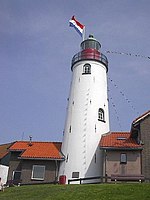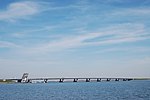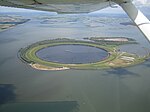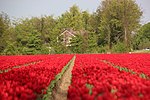Ketelbrug
Bascule bridgesBridges completed in 1970Bridges in FlevolandDrontenDutch building and structure stubs ... and 5 more
European bridge (structure) stubsNetherlands transport stubsNoordoostpolderRoad bridges in the NetherlandsZuiderzee Works

The Ketelbrug is bridge spanning the Ketel-lake between the Noordoostpolder and the Eastern Flevopolder in the Dutch province of Flevoland. The motorway A6 runs over it. A part of it is a Bascule bridge. The 800-meter-long (2,600 ft) bridge was opened on 15 June 1970. The Ketelbrug had a lot of accidents. One of those was when the warning lights didn't flash and the bridge went up. Ketelbrug had its warning lights replaced. From Ketelbrug you will be able to see Zwolse-Hoek (Urk), and Kamperhoek.
Excerpt from the Wikipedia article Ketelbrug (License: CC BY-SA 3.0, Authors, Images).Ketelbrug
Zuidermeerdijk,
Geographical coordinates (GPS) Address External links Nearby Places Show on map
Geographical coordinates (GPS)
| Latitude | Longitude |
|---|---|
| N 52.611944444444 ° | E 5.6447222222222 ° |
Address
Ketelbrug
Zuidermeerdijk
8308 PZ
Flevoland, Netherlands
Open on Google Maps










